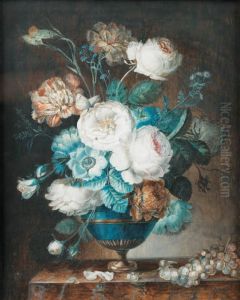Jean-Louis De Clausade Paintings
Jean-Louis De Clausade is a somewhat enigmatic figure in art history, and there is a lack of extensive documentation on his life and work. Born in 1923, the details of his early life, education, and formative experiences remain scarce in public records. Despite the lack of comprehensive biographical information, it is known that De Clausade was active as an artist in the mid-20th century and is often associated with post-war European art.
De Clausade's works are characterized by their serene, often atmospheric landscapes, which have been described as both traditional and timeless. His style suggests an influence from the French Barbizon school, which emphasized the beauty of the countryside and was a precursor to Impressionism, and his landscapes occasionally evoke the tonal qualities of artists such as Camille Corot and Charles-François Daubigny. De Clausade's paintings often feature subtle gradations of color and a soft, diffused light, lending them a quiet, contemplative quality.
While Jean-Louis De Clausade may not be as widely recognized as some of his contemporaries, his work has found appreciation among collectors and connoisseurs of landscape painting. His paintings have been featured in various exhibitions, primarily in Europe, and they continue to be appreciated for their calming aesthetic and technical proficiency.
The lack of detailed information on De Clausade's life and career means that many aspects of his biography are not widely known or documented, including the circumstances of his death. As such, there are limited academic resources and publications dedicated to his work. This gap in the historical record can sometimes occur with artists who may have been well-regarded in niche circles but did not gain widespread fame or notoriety during their lifetimes or after. Collectors and enthusiasts of De Clausade's work typically rely on the provenance of individual paintings and the occasional exhibition catalog as sources of information about the artist and his oeuvre.
